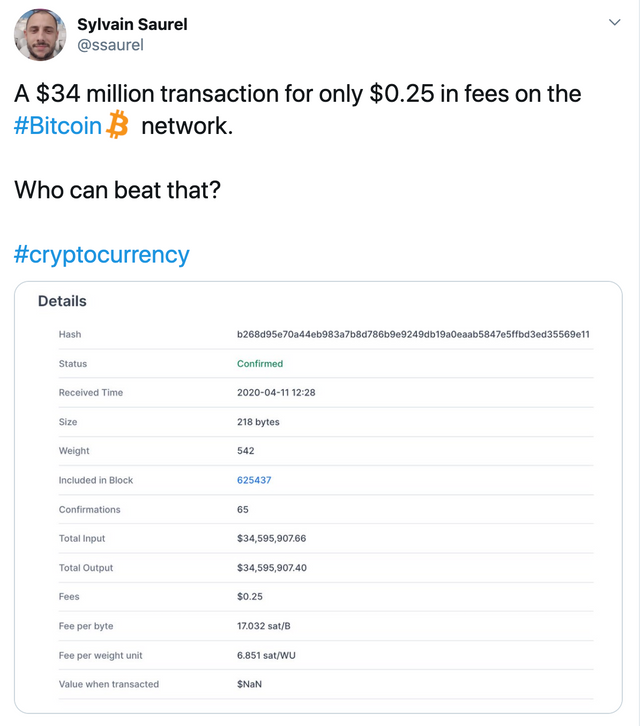Average Bitcoin Transaction Fees Reach 11-Month High of $5.16
As revolutionary as the idea and technology behind Bitcoin is, there is still room for improvement. While scalability and the user-friendliness of UI's are often mentioned as sticking points preventing Bitcoin from reaching mass adoption, another concern is transaction fees.
Unusually high Bitcoin network congestion caused the average bitcoin transaction fee to top out $5.16 on May 14, marking a 1,250% from its lowest level the month prior.
While the big news outlets covering the news about these transaction fees like to highlight the big increase in numbers for effect, it is important to take the bigger picture into consideration.
Putting the numbers into perspective
Firstly, the recent $5.16 transaction fee peak contrasts with the average transaction fees between September 2019 and April 2020. During that eight month period, fees hovered in the $0.75 region with their lowest level touching $0.28 and their highest reaching $1.77, as is demonstrated by the red box in the picture below.

Source: bitinfocharts.com
Secondly, unlike other types of financial transactions one might make with fiat or gold, bitcoin fees are not directly correlated with higher transaction fees. That much is evidenced by the following two tweets.
$34 million transferred for just $0.25

Source: twitter.com/ssaurel
$750 million transferred for just $2.75

Source: twitter.com/sthenc
That being said, due to the fact that larger transactions require more work for miners to validate, miners will choose to first mine smaller transactions over larger ones all things being equal. The congestion of the network is what really causes transaction fees to rise, as is explained on blockchain.com below.
"Miners have a financial incentive to prioritize the validation of transactions that include a higher fee. For someone looking to send funds and get a quick confirmation, the appropriate fee to include can vary greatly, depending on a number of factors. While the fee does not depend on the amount you’re sending, it does depend on network conditions at the time and the data size of your transaction."
Therefore, the increase in average transaction fees obliges users to choose between sending transfers that are fast, but expensive—or cheap, but slow.
The Lightning Network hopes to resolve the problems of network congestion and scalability. However, it may be many months or even years before it functions effectively and efficiently. As with any revolutionary technology, patience and a long term outlook is key.
---
Want to connect? Follow me here @hooked2thechain, on Publish0x, on Twitter, and on Youtube!
Want to start trading? Use this link to get a 10% discount trading on Binance.
---
New to Publish0x? Register today and start earning free crypto for reading and writing!
Disclaimer: Note that this article contains referral links and I may earn a small commission for my effort in spreading the word about crypto if you click on them. This is not financial advice. Trading presents financial risks. I cannot take responsibility for losses you might incur.
